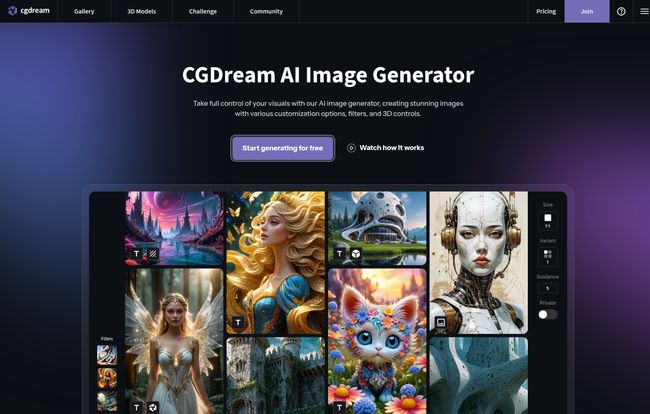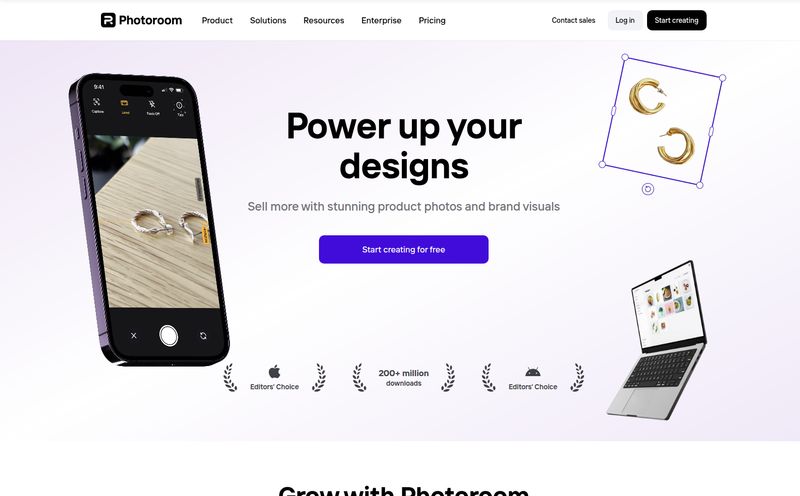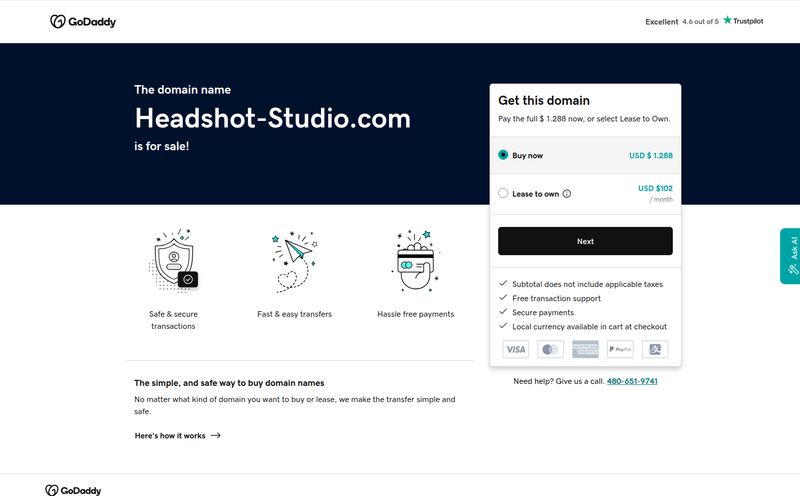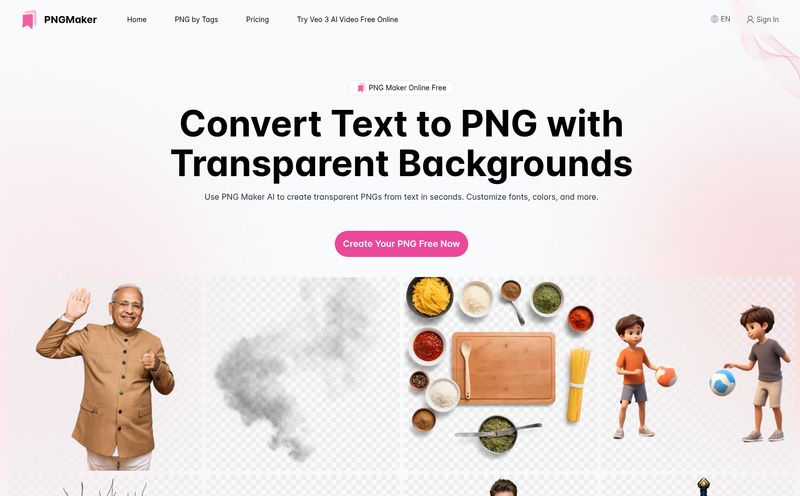So. Another AI image generator. It feels like every week a new contender pops up, promising to be the next big thing since Midjourney figured out how to draw hands. Honestly, most of them feel like a fresh coat of paint on the same old engine. You type in a prompt, cross your fingers, and hope for the best. It's a bit of a slot machine.
But every now and then, something catches my eye. Something a little… different. That’s what happened when I stumbled upon CGDream. The name itself, hinting at computer graphics, made me lean in closer. I've spent years in the SEO and content world, watching traffic trends, and I can tell you, the appetite for high-quality, controllable visual content is ravenous. I’ve been kicking the tires on this one for a bit, and I’ve got some thoughts.
So, What Exactly is CGDream?
At its core, CGDream is an AI image generator. No surprises there. But calling it just that feels like a disservice. It’s not simply a text-to-image machine. The platform’s big hook is its ability to work with 2D visuals and 3D models as a source. Think about that for a second. Instead of just describing a scene, you can upload a rough 3D model of a product, a character, or an architectural sketch and have the AI render it into a fully realized, artistic image. This moves beyond simple prompting into the territory of genuine digital art direction. It’s less like a vending machine where you put in a prompt and get a surprise, and more like a high-tech artist’s studio.
Diving into the Features: My First Impressions
Hopping into the platform, the interface is clean. It’s got that dark, modern UI that’s pretty standard for creative tools these days, which I appreciate. No one wants to stare at a stark white screen at 2 AM while trying to conjure a cyberpunk cityscape. It feels intuitive enough for beginners but has enough knobs and dials to keep the power users happy.
More Than Just Your Average Prompt Box
The first thing that stands out is the variety of inputs. Sure, you have your standard Text-to-Image generation, which is powered by their in-house models, Flux Dev and Flux Pro. The results are solid, on par with many of the top-tier generators out there. But the real magic happens with the other options:
- Image-to-Image: You can upload an existing photo or sketch and use a prompt to modify it. Pretty standard stuff, but executed well.
- 3D Rendering: This is the showstopper. You can upload a 3D model and use AI to texture, light, and place it in a scene. For product marketers, game designers, or architects, this is a massive deal. It closes the gap between a sterile 3D render and a compelling, atmospheric final image.
- AI 3D Model Generator: It even goes the other way, attempting to create a 3D model from a 2D image. It’s still an emerging technology across the board, but having it included here is a bold and exciting move.

Visit CGDream
Fine-Tuning Your Masterpiece
One of my biggest gripes with early AI generators was the lack of control. You got what you got. CGDream clearly understands this frustration. They've built in some powerful editing tools that feel like they belong in a proper photo editor. The AI Inpainting lets you select a part of your image and regenerate just that area. Got a weird-looking tree in the background? Just paint over it and tell the AI to turn it into a streetlamp. Boom. Done. The AI Image Upscaler is also a godsend, taking your creations and bumping up the resolution and detail without turning them into a pixelated mess. Its a pretty solid feature for anyone needing print-quality assets.
And then there are the filters and LoRA styles. With over 300 to choose from, you can quickly apply a consistent aesthetic, from 'Cinematic Lighting' to 'Ghibli Style'. It's a fast way to get a specific vibe without having to wrestle with a ten-line prompt.
Let's Talk About the Pricing Structure
Alright, let's get down to brass tacks. Is it free? Yes… and no. Like many platforms in this space, CGDream operates on a freemium model with credits. I've laid it out in a simple table because trying to decipher these things from a pricing page can sometimes feel like doing your taxes.
| Plan | Price (Annual Billing) | Monthly Credits | Commercial Use? | Best For |
|---|---|---|---|---|
| Free | $0 / month | 3,000 (100 per day limit) | No | Hobbyists & Curious Newcomers |
| Basic Annual | $8 / month | 10,000 | Yes | Freelancers & Small Projects |
| Pro Annual | $24 / month | 40,000 | Yes | Serious Creators & Agencies |
| Premium Annual | $48 / month | 90,000 | Yes | Power Users & High-Volume Teams |
The Free plan is genuinely generous. 3,000 credits a month is more than enough to learn the ropes and figure out if the tool is for you. The big catch, and it's a critical one for professionals, is the no commercial use clause. If you plan to use these images for a blog, a client project, or anything that makes you money, you have to pony up for a paid plan. For my money, the Pro Annual plan seems to be the sweet spot, offering a huge chunk of credits and all the advanced features.
The Good, The Bad, and The AI
No tool is perfect, right? After spending some quality time with it, here’s my breakdown of what works and what could be better.
What I Really Liked
The intuitive feel of the platform is a huge plus. But the real star is the 3D model integration. This single feature sets CGDream apart from the very crowded marketplace. For anyone working in e-commerce, product visualization, or even just concept art, this is a game-changer. The ability to control the output with inpainting and upscaling also gives it a more professional feel. You’re not just a prompter; you're an editor. I also have to give them props for the generous free tier. It really does let you get a full sense of the tool's power before you open your wallet.
Where It Could Improve
Naturally, the main limitations are tied to the credit system. On the free plan, you're capped at 100 credits a day, which can be frustrating if you get into a creative flow. Some of the most compelling features, like the best upscaler and advanced inpainting options, are locked behind the paid tiers. This is standard practice, but it's something to be aware of. Also, while the AI 3D model generation is cool, it's still a work in progress—much like the technology is everywhere else. Don't expect it to spit out a perfect, game-ready model from a single photo just yet.
Frequently Asked Questions About CGDream
- Is CGDream actually free to use?
- Yes, there's a free plan that gives you 3,000 credits per month (with a daily limit of 100). However, images created on the free plan cannot be used for commercial purposes.
- Can I use the images I create for my business?
- You bet, but only if you're on a paid plan (Basic, Pro, or Premium). All paid subscriptions grant you a commercial license to use, copy, and modify the images you generate.
- How does the credit system work?
- Different actions cost a different number of credits. A simple text-to-image generation might cost a few credits, while using the upscaler or a more advanced model might cost more. Your credits reset every month on a paid plan.
- What is a LoRA style?
- Think of LoRAs as style packs for the AI. It's a technique used in the AI art community to train the AI on a very specific aesthetic (like a particular artist's style, a type of lighting, or a character design). CGDream has a bunch of them built-in, which makes getting a consistent look much easier.
- Is CGDream better than Midjourney or DALL-E 3?
- It's not really about 'better', it's about 'different'. If you just want to type a sentence and get a beautiful image, Midjourney might be your jam. If you need to integrate your own 3D models or want finer-grained editing control like inpainting, CGDream offers a workflow that the others just don't.
So, is CGDream Your Next Creative Partner?
After all is said and done, I'm genuinely impressed with CGDream. It's managed to carve out a unique identity for itself in a sea of lookalikes. It’s not just another AI image generator; it’s a robust creative suite that understands the need for control and workflow integration, especially with its 3D rendering capabilities.
If you're a casual hobbyist, the free plan is a fantastic and deep playground. If you're a professional creative, a digital marketer, or anyone who needs to generate high-quality visuals for a living, CGDream is absolutely worth a serious look. It might just be the tool that bridges the gap between your imagination and your final render. Give the free plan a spin—you've got nothing to lose and a whole new world of creative possibilities to gain.



